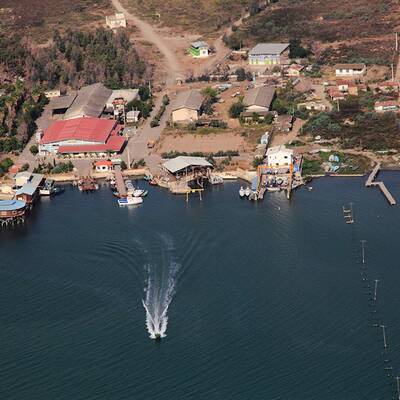
Turkmen Douzi of Golestan
One the most beautiful and delicate Iranian craft is Turkmen Douzi of Golestan (literally meaning Turkmen sewing, Persian: ترکمندوزی گلستان) created by Turkmen people. Turkmen people are ethnic group who live in the east part of Mazandaran province and the north part of Khorasan in Iran, as well as in Turkmenistan and northwest part of Afghanistan. Turkmen women embroider sleeves, trousers, around the collar and front, and sew a scattered pattern on their costumes. This art has a long history in Iran. Turkmen illustrated embroidery has been common since the time of the Scythians (7th century BC- 3rd century BC) and was widely used in other periods along with other methods of sewing. The peak periods of this art are in the period of Afsharid (1736-1796), Zand (1751-1794) and Qajar (1789-1925).
In ancient times, Turkmen Douzi was on black silk and the pattern covered the entire background, usually sewn in a special method with leaves. Patterns used in Turkmen Douzi include Toranj, Shamsei (sunshade), geometric patterns, flower and bird and Etc. The fabrics used in Turkmen Douzi are mostly silk, cotton, and wool fabrics in black, azure, yellow and red.
The threads are used in Turkmen Douzi are colored silk threads in azure, wine, yellow, white, black, blue, green and orange. Turkmen Douzi is mostly used to decorate costumes in different parts of the Turkmen Sahra. The fringe of collar as well as the fringe of the sleeves are embroidered with delicate and simple patterns. The height of these costumes reaches below the. The frequent patterns that are used embroidered artistically on pants around the ankles as well as around the women's hats are knot, chicken paw, flower, hourglass and so on. Girls in this area wear embroidered hats until they are married, and even after marriage, they wear hats that are embroidered with silk thread in red, yellow, blue, and black.
